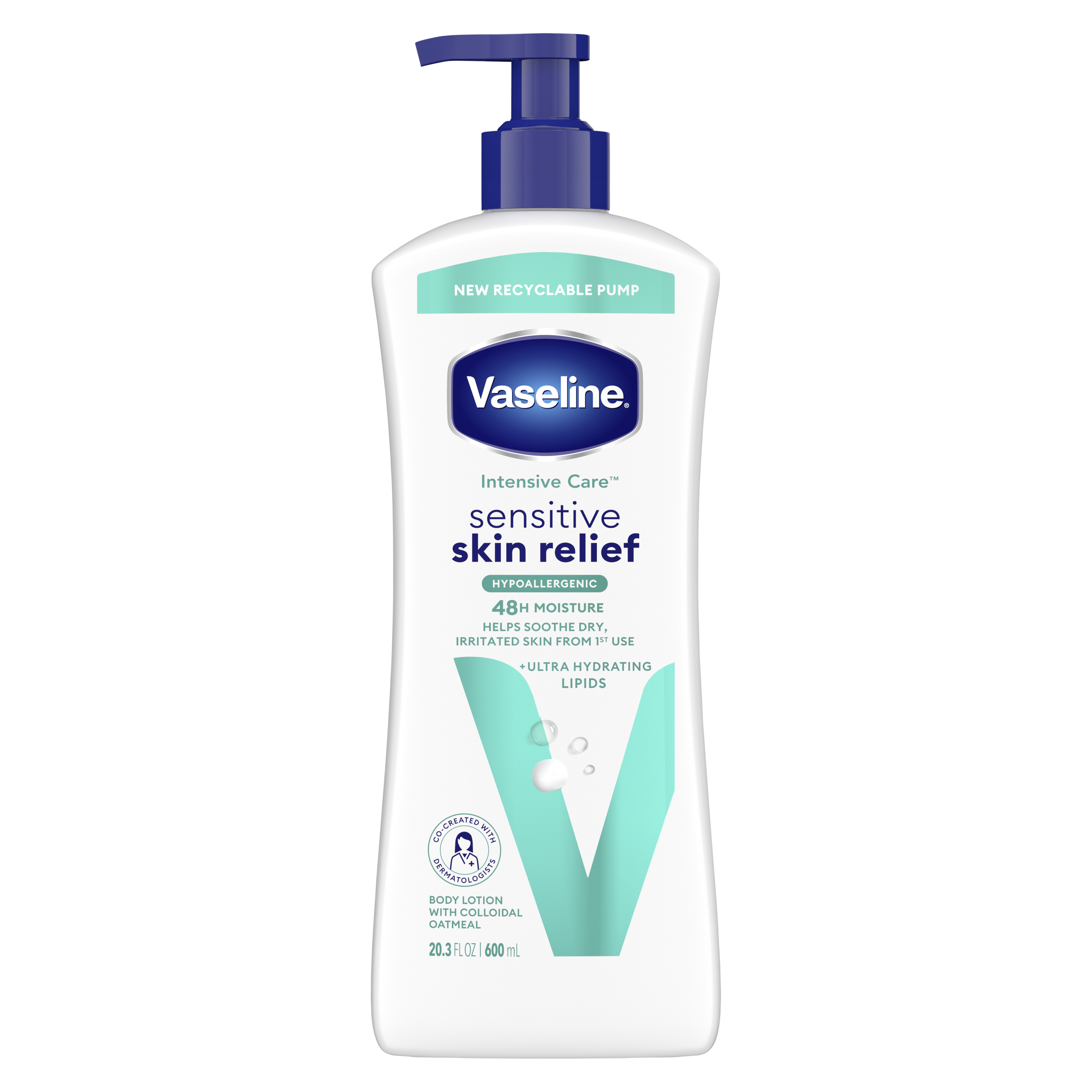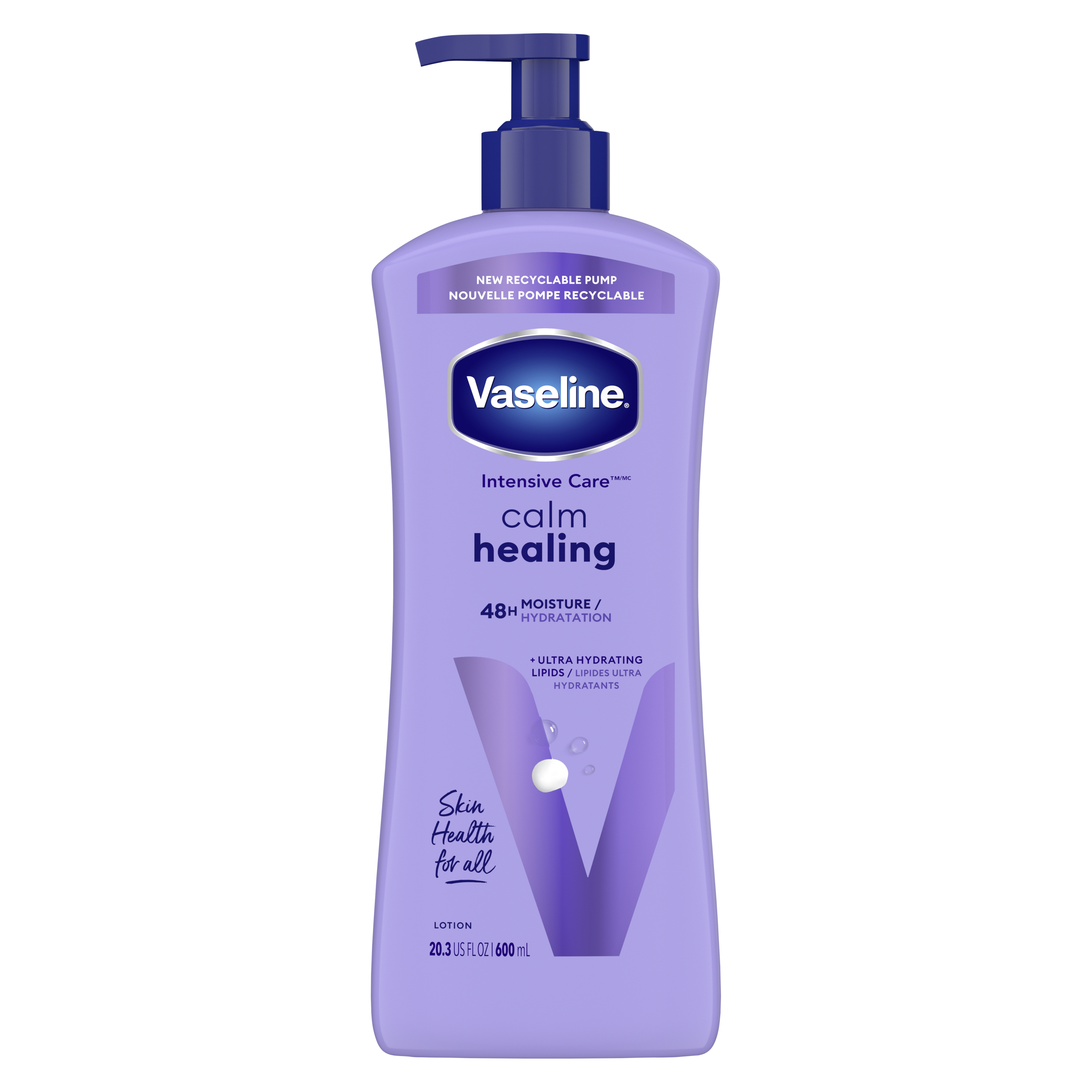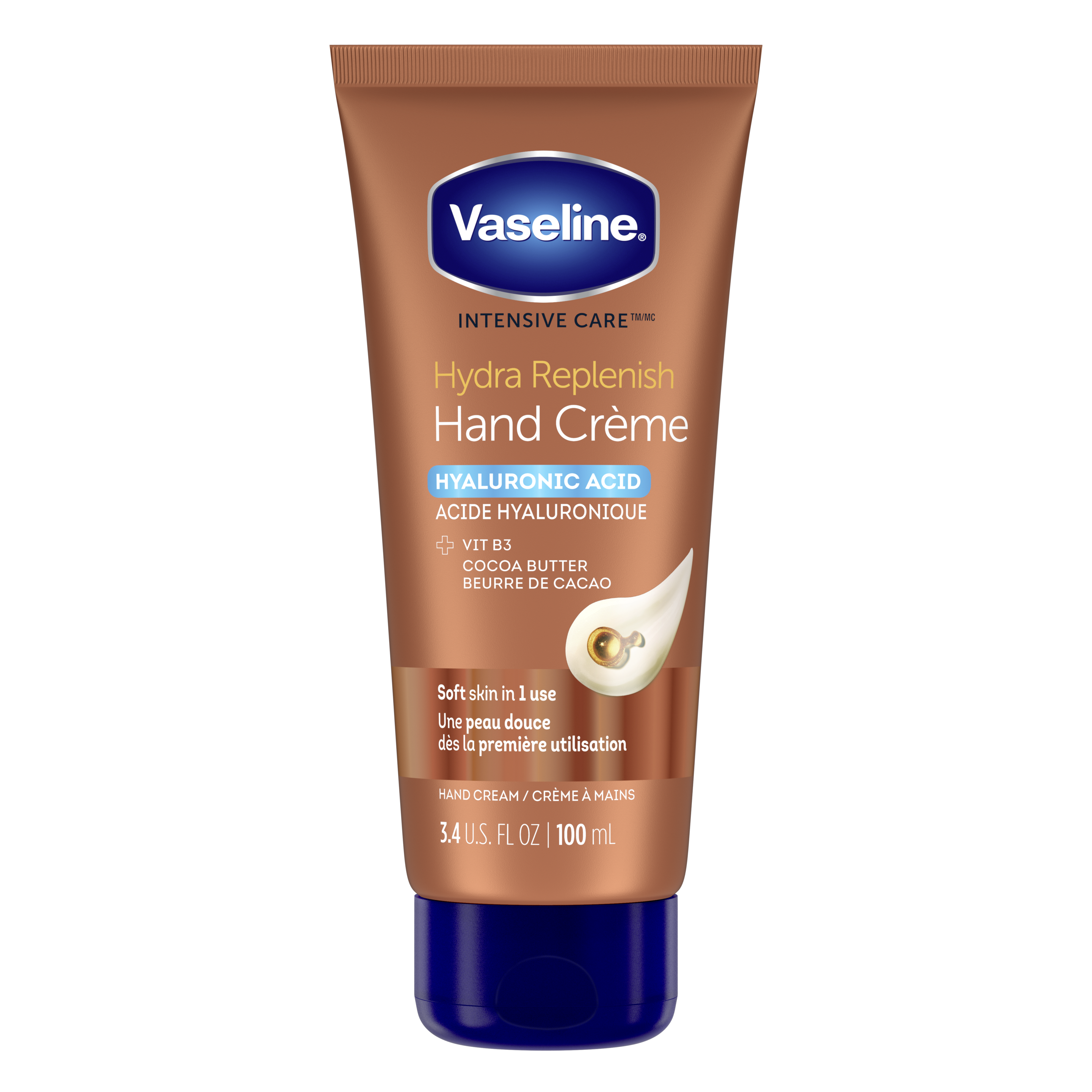Skip to content
Many people experience dry skin, but what does it mean and what can you do about it? Here's everything you need to know about dry skin and how to treat it.
Dry skin is a reflection of what is happening in the outer layer of the skin — it indicates that your skin is dehydrated and is lacking in the hydration and naturally produced oils that should keep it soft. This can cause itching, scaling, rashes, and redness, and can sometimes escalate into more serious conditions. Usually, it affects hands, arms and legs but can also appear on your face, lips and other parts of the body.
Some of the causes of dry skin happen naturally. For example, when the skin barrier becomes compromised and struggles to hold moisture, or when the skin loses its ability to renew its cells. But other external factors including the environment and skin care products with harsh ingredients can cause dry and itchy skin, too.
Keep reading to find out what causes dry skin and its symptoms, as well as how to prevent it with expert tips from dermatologists Dr. Mona Gohara and Dr. Shari Marchbein.
This article will cover:
- Why is my skin so dry?
- Causes of dry skin
- Symptoms of dry skin
- Treatment for dry skin
- How to prevent dry skin
- FAQs
Why is my skin so dry?
“Dry skin is caused by an impaired skin barrier and dysfunction or deficiency in the necessary healthy fats in the top layer of the skin (cholesterol, fatty acids and ceramides), which are essential to normal skin function,” explains Dr. Marchbein.
This can be caused by many factors, including bathing too often, using harsh soaps, over-exfoliating or cleansing, and some medical conditions. It also occurs naturally during the aging process. People usually experience it most in winter, when the air is cold and low in humidity both outdoors and indoors. Lack of humidity in the air can cause dryness as the skin usually reflects the moisture levels it’s exposed to.
Luckily, there’s a lot you can do to relieve and prevent dry skin at home, including regularly moisturizing with body lotions and creams, choosing gentle cleansers, and using sun protection all year round. Dry skin is usually harmless, but it can cause discomfort if not treated. Other skin conditions, like eczema, can also cause dry skin and may need more than a bit of moisturizer. In these circumstances, you should make an appointment with your doctor who can examine the causes of dry skin and refer you to a skin specialist, like a dermatologist.
10 causes of dry skin
1. Heat
Central heating, space heaters, fireplaces, and other types of heaters reduce the humidity in the air, which can cause dry skin. This is because the skin tends to reflect the humidity level of its surroundings, and heaters ‘dry up’ the air, causing skin to lose moisture.
2. Environment
Your environment can influence your skin’s hydration. Climates with low humidity and cold climates with heavy winds can cause dry skin as the skin usually mimics the moisture levels of its environment. Dry skin is usually worse during the winter but can occur all year round.
3. Harsh soaps and detergents
Using harsh soaps can damage the skin barrier and cause dry, flaky, or even itchy skin, according to Dr. Mona Gohara. Some laundry detergents can also irritate dry skin. Always choose ‘hypoallergenic’ laundry detergent and wash your skin with a moisturizing, non-soap cleanser that can help deposit moisture as it cleans your skin.
4. Atopic dermatitis & other skin conditions
Atopic dermatitis is characterized by itchy and flaky skin, which can cause dryness. Atopic dermatitis usually happens when the skin comes into contact with an allergy trigger, such as dust, pet fur or an ingredient in soap or laundry detergent.
Other skin conditions that can cause dry skin include perioral dermatitis, ichthyosis, psoriasis, and seborrheic dermatitis.
5. Medical treatments
Some medical treatments like dialysis, treatments for cancer, or certain types of medications can contribute to extremely dry skin.
6. Hormones
Hormones play a key role in skin health. This is especially true for women around the time of menopause, who may find their decreasing estrogen levels make their skin dry. Menopause also accelerates the decline in collagen production, which helps the skin stay feeling supple and elastic.
7. Aging
As you age, the oil glands in your skin lose their moisturizing ability, making it more prone to itchiness and dryness. It usually starts to affect women after menopause whereas men don’t often experience this until they reach their eighties.
8. Water loss from the outer layer of the skin
Transepidermal water loss (TEWL) happens when water leaves deep layers of your skin through the surface. This occurs naturally in mammals all the time. Usually, keeping your skin hydrated will do enough to offset the evaporation. However, TEWL can get out of control for many reasons, including eczema, burns, over-cleansing your skin, and being exposed to the sun, causing skin dryness.
9. Cosmeceuticals and skin care in dermatology
Some skin-care products like retinoids, salicylic acid, fragrances, and preservatives can dry out and irritate your skin, so it’s important to pay attention to the ingredients list of your skin-care favorites.
10. Genetics
Dry skin can also be caused by genetics. A study in the Journal of Cell Science shows that mutations in a gene that produces filaggrin — a protein that forms and hydrates the skin barrier — can cause several conditions. If dry skin runs in your family, make sure you moisturize daily.
Symptoms of dry skin
Dry skin shows up in various symptoms that depend on different factors including your health and age. Here are some of the most common symptoms of dry skin:
- Flaky or rough-textured skin: As the skin loses its moisture, its texture becomes flaky and rough.
- Excessive itchiness: People who suffer from excessively dry skin report their skin itches most of the time, which can make it difficult to focus on daily tasks. It can also impact your sleeping patterns.
- Infections: When the skin is too dry, it means the outer layer is damaged. This can cause germs to get inside and turn into skin infections. Warning signs of an infection include yellow crusts on the skin, pus or other fluids, swelling, and discoloration.
- Skin burns or stings: Dry, cracked and raw skin usually feels painful, especially if something touches it (like water, for example).
- Peeling skin: The outer layer of your skin is constantly renewing itself by shedding dead cells. You don’t usually see it, but when dry skin occurs, skin starts to peel off visibly.
“Sometimes dry skin is a sign of some other issue such as eczema, psoriasis, or a thyroid imbalance,” says Dr Gohara. “See a Board-Certified Dermatologist to examine the skin and offer a skilled assessment as to what can be done to alleviate the problem. To find a dermatologist near you, please use the See My Skin platform, a tool created by Vaseline® and HUED to help people with black and brown skin find dermatologists that are experts in treating their skin with the superior care their skin deserves.”
Treatment for dry skin
Fortunately, there are many simple and inexpensive treatments for dry skin, including moisturizers, emollients, and keratolytic agents. Here are Dr. Gohara’s top tips:
Moisturizers
The first step in fighting dry skin is using moisturizers, which rehydrate the top layer of your skin while sealing in moisture. They usually contain 3 types of ingredients: humectants, which attract moisture; occlusives, which seal the moisture in the skin; and emollients, which smooth the skin. Dr. Gohara recommends looking for, “humectants like glycerin and hyaluronic acid, occlusives such as petroleum jelly or squalene, and emollients such as shea, or cocoa butter,” to help moisturize dry skin. Apply moisturizer several times each day, especially after baths and showers when your skin is still moist. For your neck and face, you should choose a cream that’s easy to apply and leaves no residue.
Read next: From Flaky to Fabulous: A Customized Skin-Care Routine for Dry Skin
Use a humidifier
Use a humidifier: during winter, set a humidifier to around 60% to help replenish the top layer of your skin.
Use gentle cleansers
Wash your face with a gentle, alcohol-free cleanser twice a day and after any time you sweat a lot. Products with stearic acid or linoleic acid can help replenish your skin moisture. When your skin is still damp, apply the topical medication you’re using (if any), then apply a moisturizer (only in the morning, not before bed) that preferably contains sunblock or sunscreen with an SPF of at least 30, even on cloudy days.
When it comes to handwashing, use a fragrance-free soap, then gently apply moisturizing cream while your hands are still damp In the shower, try non-soap cleansing creams or shower gels and avoid loofahs and pumice stones.
Use Lotion
Lotions are usually lighter than ointments and creams, however, you could have a seasonal approach by using lotions in the warmer months and heavier creams during winter. “My go-to lotion is any lotion from the newly relaunched Vaseline® Intensive Care™ line. They are reformulated with patent-pending Ultra-Hydrating Lipids to help provide 88% more moisture and have the technology to work on the skin to replenish its own ceramides for a strengthened skin barrier, making for great moisturizers,” says Dr. Gohara.
Bathing and shower tips for dry skin relief
“It may seem hard to believe but the first step to hydrated skin starts in the shower. Harsh cleansers can strip the skin barrier of natural lipids and proteins leaving it weaker,” says Dr. Gohara. To make your baths and shower better for your skin, make sure you limit your time to 5–8 minutes and use warm water instead of hot water. You should also choose an allergen-free and fragrance-free cleanser. Out of the shower or bath, blot your skin dry gently with a towel, then apply moisturizer within 5 minutes.
Read next: Feet First: Here's How to Treat Dry Skin on Your Feet
How to prevent dry skin
There are a few things you can do to prevent dry skin conditions from occurring in the first place. Firstly, make sure you're staying hydrated. If you don’t have enough moisture in your body, every milliliter of water that evaporates will be worse for your skin. There is no specific amount of water you should drink, however, 3 liters per day is a good start and if you live in a hot climate, you should increase this. Secondly, always pay attention to what cleansers and soaps you’re using. As we mentioned above, some substances can irritate your skin, so always check the labels and ingredients. Try and cleanse gently no more than twice a day. You must not overdo it as too much cleansing will weaken the top layer of your skin and cause more water loss. If you’re always on the go and need a portable solution for dry skin, try Vaseline® All-Over Body Balm Jelly Stick, a fragrance-free stick that delivers all the benefits of Vaseline® jelly, even in hard-to-reach spots on your body.
Surprisingly, many skin irritants are contained in household products. They can show up in laundry detergents, cleaning products and air fresheners, so choose gentle, fragrance-free products when you can and ditch the air fresheners if you think they may be causing irritation. To prevent dry skin at home, make sure you wear gloves while doing your housework, preferably non-latex, rubber ones. Dust mites are also responsible for skin irritation, so vacuum floors and carpets regularly and wash your bedding at 130°F at least once a week. Hand sanitizers, which have become a staple in households and public places, can also dry out skin if they’re alcohol-based. If your hands are extremely dry and flaky, look for dermatologist-tested ones, like Vaseline® Clinical Care Hand Sanitizer Lotion.
As you can see, dry skin conditions are quite common, but they can be treated and prevented by making small but significant changes to your routine and the products you use. If you want a daily ally against dry skin our Vaseline® Creams and Lotions Range has been dermatology tested to give you and your skin the best care possible.
FAQ
What is the main cause of dry skin
Dry skin occurs when the top layer of your skin loses or is unable to keep moisture. The most common cause of dry skin is aging, as our skin produces less collagen and retains less moisture. However, ingredients in harsh detergents and soap; cold, dry climates; or even certain skin conditions can all result in dry skin.
How do you fix dry skin?
Usually, moisturizing regularly and paying attention to the cleansers you use will be enough to care for dry skin. However, if the condition persists and turns into dermatitis or infection, you should consult your doctor or a skin specialist like a dermatologist.
Which deficiency causes dry skin?
Dry skin comes from a lack of moisture or hydration in the skin, but it also can be influenced by a mineral and vitamin deficiency like vitamin A, vitamin D, niacin, zinc, and iron.
These articles provide general tips and information about improving skin health. They have been written by health and beauty writers. They have not been written by health care professionals and, as such, don’t constitute medical advice. If you have a serious skin condition, please consult a medical professional.














